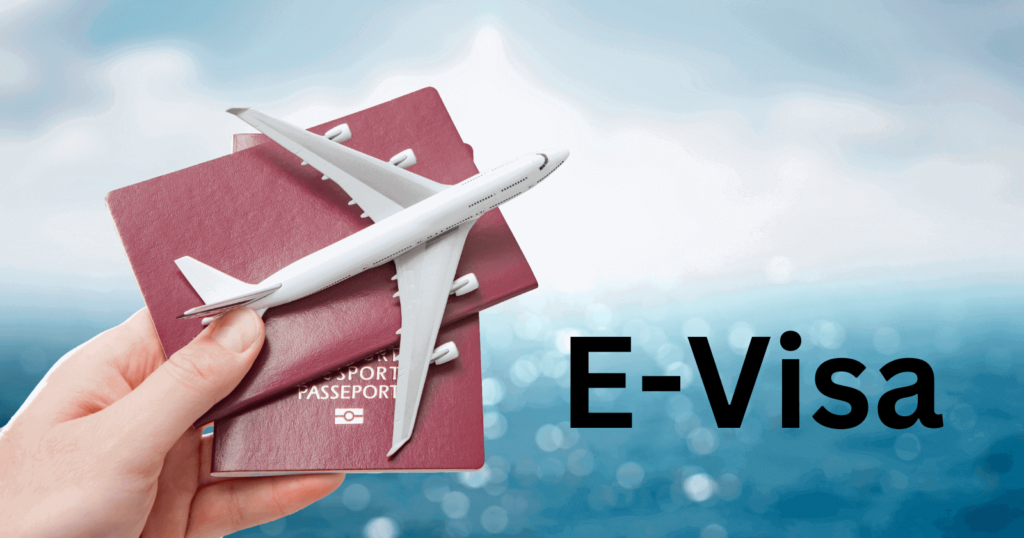
Traveling internationally has become more accessible and convenient, thanks to the rise of electronic visas, or e-Visas. An e-Visa allows you to apply for a visa online without having to visit an embassy or consulate, streamlining the visa application process for travelers. In this blog, we’ll explore the benefits of applying for an e-Visa, the step-by-step process, and key tips to make your application a success.
What is an E-Visa?
A digital visa known as an e-visa is one that a nation issues to citizens of other countries, allowing them to enter and stay in that nation for a predetermined amount of time. Since the procedure can be completed online, it’s a great choice for visitors, business travelers, and anybody else looking for a speedier and more effective approach to obtaining a visa.
Benefits of Applying for an E-Visa
1. Convenience and Time-Saving
Applying for an e-Visa can be done from the comfort of your home, eliminating the need for in-person visits to embassies or consulates. It saves time by allowing you to submit your documents electronically and usually receive the visa through email in a matter of days.
2. Cost-Effective
In many cases, e-Visas are more affordable than traditional visa applications. You avoid additional costs associated with travel to an embassy or visa service fees.
3. Faster Processing Times
Unlike regular visa applications, which can take weeks or months, e-Visa processing is usually quick. Most countries process e-visa applications in 3 to 7 business days, and some even offer express services for urgent travel needs.
4. Secure and Transparent
E-visa systems often use advanced security measures like biometric data or QR codes to ensure authenticity and minimize the risk of fraud. Plus, applicants can track their visa status online, providing transparency throughout the process.
5. Environmentally Friendly
By avoiding paper forms and reducing in-person submissions, e-Visas help reduce paper waste, making the process more eco-friendly.
A Comprehensive Guide for Filing an E-Visa
Applying for an e-visa is generally straightforward. While processes may differ slightly between countries, the following steps outline the typical procedure.
1. Check Eligibility
Before you begin, check if the country you’re flying to accepts e-Visas and confirm that your nationality is qualified for an e-Visa. Certain nations restrict the use of e-Visas to specific kinds of travel, such tourism or quick business trips.
2. Prepare Required Documents
After confirming your eligibility, collect the paperwork needed for the application. Documents that are frequently needed include.
1] A valid passport with a minimum of six months after the planned arrival date.
2] a current passport-sized photo (according to national regulations).
3] Itinerary, which includes information about the return flight and hotel arrangements
4] Evidence of sound financial standing (bank statement, for example).
5] If necessary, purchase travel insurance
Make sure all your documents are in the correct format (usually PDF or JPEG) and meet the specifications outlined by the issuing country.
3. Finish the Online Application
Fill out the online application form by going to the destination country’s official e-Visa portal. You will be required to submit your travel itinerary, passport details, and personal information. To prevent rejection, make sure that all of the information you submit corresponds with the information on your passport.
Important: Verify your information twice before submitting it, as any mistakes could cause your visa application to be denied or delayed.
4. Upload Supporting Documents
Upload the required documents, such as your passport scan and photograph, to the application portal. Make sure the files meet the size and format requirements specified.
5. Cover the Visa Fee
Following the submission of your application, the payment page will be displayed to you. Visa fees vary depending on the nation and type of visa you’re seeking for. Typically, credit or debit cards are used for payments, while some nations also accept alternative online payment options.
6. Get Your Electronic Visa
Your e-visa will be sent to you via email as soon as your application is approved. While each nation has different processing dates, most e-Visas are granted in a week or less. When you reach your location, make sure to print a copy of the e-Visa (if applicable) to show immigration.
7. Present Your E-Visa at Immigration
Upon arrival at your destination, present your e-visa along with your passport at the immigration checkpoint. Some countries may only require a digital copy, but it’s always a good idea to carry a physical printout just in case.
A Successful E-Visa Application: Some Advice
Apply Early: If you need an e-Visa, don’t wait until the last minute to apply. Even while processing times are quick, unplanned delays can happen, particularly during the busiest travel seasons.
Make Sure It’s Accurate: Verify all the information on your application, including the passport information. Errors may cause delays or the denial of a visa.
Stick to official government websites: be wary of unaffiliated websites that purport to provide visa services. To avoid scams or exorbitant fees, always utilize the official government website.
Verify the validity of your visa: by checking the number of entries permitted and the validity period of your e-visa. Certain e-Visas are only good for one entry, while others allow you to enter more than once in a given period of time.
Hold Onto Copies Convenient: While traveling, keep both digital and hard copies of your e-Visa with you, as some immigration checkpoints may demand.
Final Thoughts
Applying for an e-Visa is a game-changer for modern travelers, offering a seamless and efficient way to handle visa requirements. With the convenience of applying from anywhere in the world, faster processing times, and the security of online submissions, the e-Visa system has made international travel more accessible than ever before. Whether you’re traveling for business, leisure, or study, understanding how to navigate the e-Visa process ensures that you can focus more on planning your trip and less on bureaucratic hurdles.
